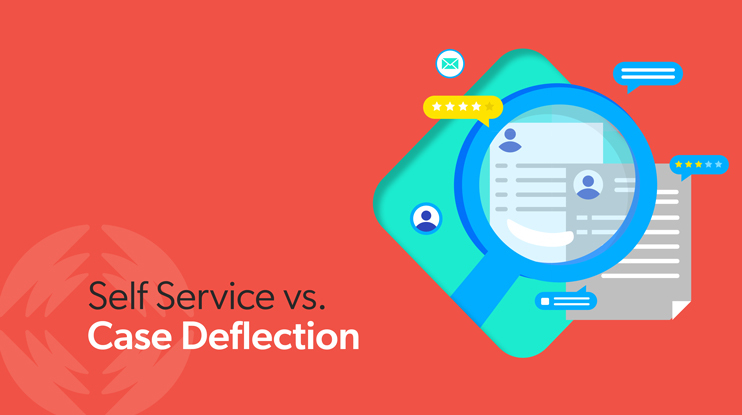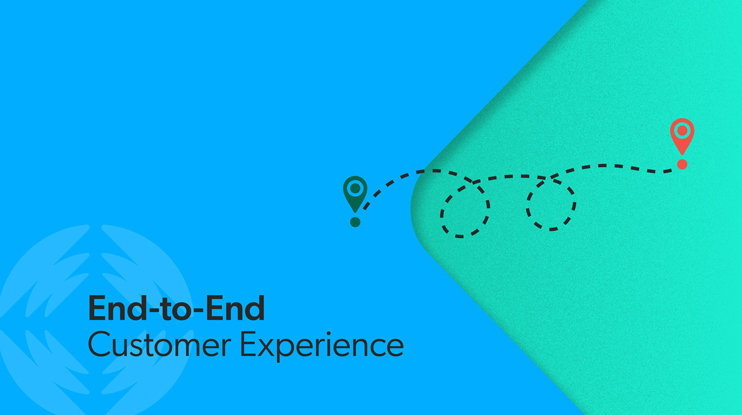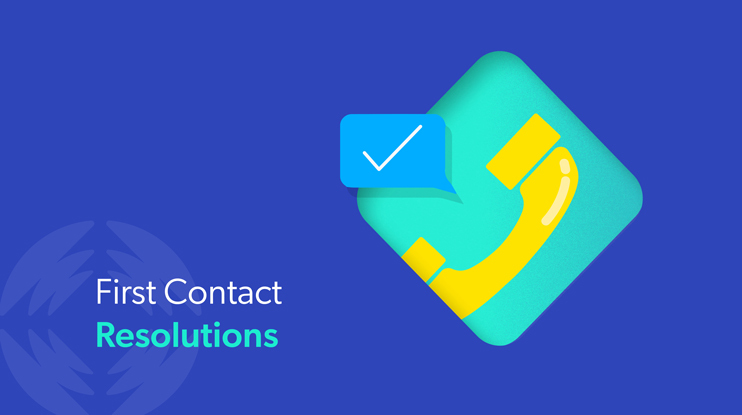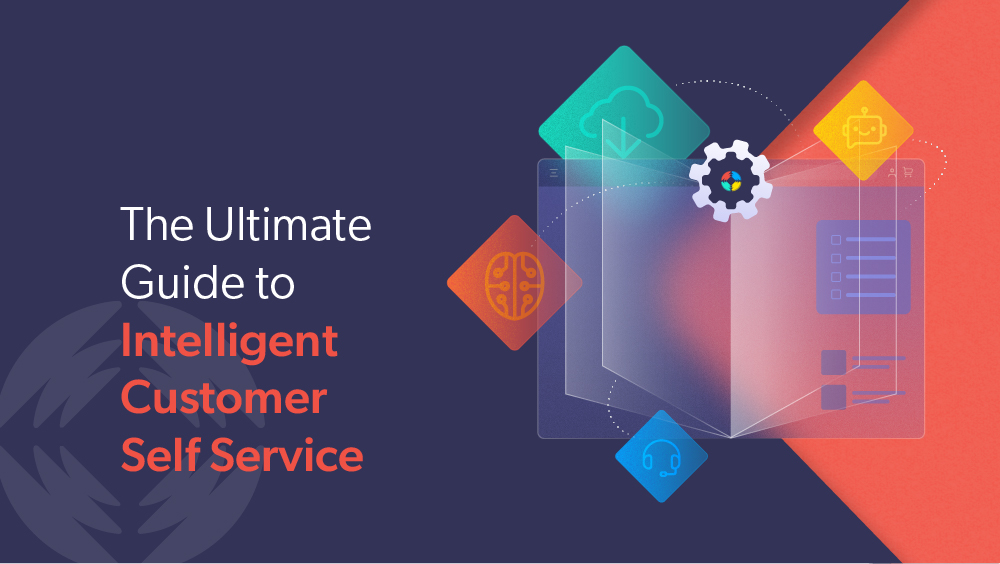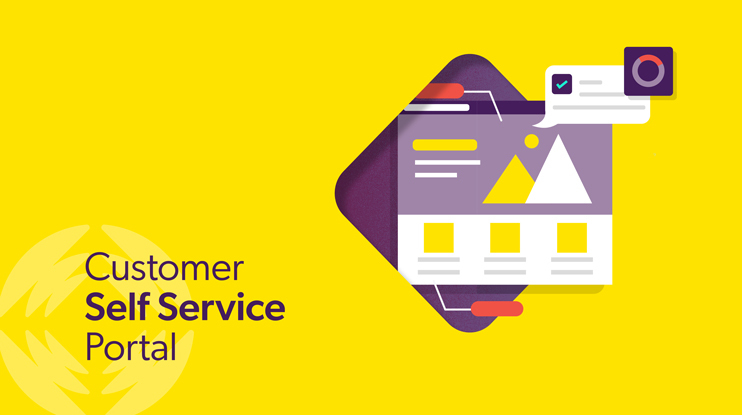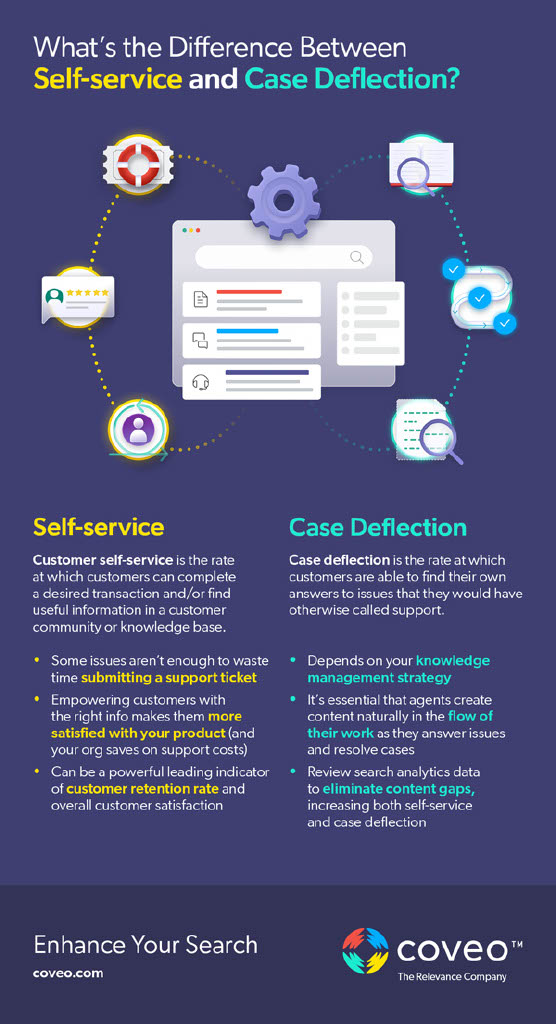Wondering about case deflection vs self service?
Both are important terms for the customer support industry. Both are about helping customers help themselves, though they’re the same story told from different perspectives.
And both can be impacted by the right AI-powered search technology. For example, Informatica used AI search to improve their case deflection and saved $3.5 million in deflected support costs. Cybersecurity leader Forcepoint reduced time-to-resolution by 25% because consistent information was available throughout different user experiences. And Tableau saved $1.5M a month with AI search in their self service portal.
So self service and case deflection — seems like the same thing, right? Not really. There are subtle nuances between the two concepts. The better you grasp them, the more rewards your business can reap.
Let’s get into the nitty gritty.
Relevant Viewing: Best Practices to Transform your Self-Service Experiences
What Is Case Deflection?
Case deflection is the rate at which customers are able to find answers to issues on their own. Otherwise, they would have called support. This calculation looks at the interactions where a customer intended to submit a ticket. This metric can sometimes seem nebulous, because how do you track something that didn’t happen? We’ll get into identifying different kinds of case deflection below.
Essentially, your customer intended to submit a case. But helpful resources or content made available to them eliminated the need for live customer service assistance. In other words, the case was successfully deflected. Customer frustration averted.
Case deflection depends on your knowledge management strategy. (This also includes identifying and eliminating content gaps, for which search analytics data is very useful.) This means capturing, documenting, and making information available to those who need it, whether customer, agent, employee, or someone else. This goes doubly for agent-created content, since they’re at the frontlines helping customers resolve issues in real-time. Ensuring that your agent-created content occurs naturally in an agent’s workflow is essential.
Case deflection improves agent productivity. It reduces the need for a support request for simple issues — keeping both your support team and customers happy.
What Is Customer Self Service?
Customer self service is the rate at which customers can find useful information. Said information can reside in numerous places. Say, a knowledge base, your CRM, the organization’s customer community, or even instant message services like Slack.
Offering customer self service means letting customers quickly find the information they need. This finding should not include submitting a support ticket to your help center or speaking with a support agent. This is more often for what are called “known issues,” or problems that your company knows how to fix.
Self service does not always mean a case was entirely avoided. Some minor annoyances are not big enough to waste time trying to create a case for assisted support. However, by empowering customers with the information, they become more educated about your product and are more overall satisfied. Maybe they learned about a feature that went unnoticed, one that had a really positive impact on their daily lives. And maybe that feature has an upsell that’s really appealing, resulting in more revenue for your business. Either way, in the long run, your organization is saving on support costs.
Relevant Reading: The Guide to Delivering Intelligent Self-Service
Another nuance between case deflection and self service is that self service invites the customer to explore. Case deflection tends to discourage the customer from contacting your support center, since it’s mainly focused on cost-savings. Self service can reward your business as well. The more your customers interact with content, the greater the indication that a blog or documentation is helpful. (Or missing!)
Impact of Self Service and Case Deflection on Your Business
Self service, along with other support trends, can be a powerful indicator of customer retention rate and overall customer satisfaction. According to the TSIA, customers increasingly prefer using self service to help themselves, with usage growing to 75% in 2021. Search is a large part of providing great self service.
As of 2019, TSIA found that nine out of 10 organizations offer search to assist customers to self serve. But the capabilities and results vary.
- One-third of organizations report that their knowledge base search only searches the knowledge base.
- 13% report using federated search, searching multiple databases and channels.
- Just 22% use unified search (which indexes content sources together). And 19% apply machine learning to rank results according to relevance.
- Personalization, however, is not widely used. Fifty-one percent of organizations provide real-time suggestions during case creation. And only 21% reported providing list of FAQs personalized to the customer.
When a customer starts on their self-service journey, they may not know if they intend to speak with a person. Most likely, they’ll want to see if a solution to their problem exists, and if they can implement it themselves. If the problem is dire — say they need to refute charges on a stolen credit card — contacting an agent is paramount. But if the issue is more along the lines of resetting a password or turning on a particular feature, that’s a different story. If a customer can’t find the information they’re looking for, then they’ll submit a case. And that’s where case deflection should come in.
Self service isn’t limited to just customers. There are agent assist tools that can enhance the customer support agent experience, too.
Relevant Reading: HQ Infographic: Self-service vs Case Deflection: What’s the Difference?
Benefits of Improving Case Deflection Rates For Service Teams
In Coveo’s 2023 Customer Service Agent Relevance Report, 80% of the 250 service agents we interviewed said that quick access to information impacted essential contact center metrics like case deflection rate.
One of the biggest issues facing customer care teams? A phenomenon we’ve dubbed “Swivel Chair Syndrome” which is when agents search across different systems and windows to find the answers they need to resolve a customer issue. Seventy-eight percent of survey respondents said they access, on average, five systems a day. Thirty-six percent of agents said that struggling to find the information they need to do their jobs is overwhelming and leaves them feeling burned out.
Combining case deflection and self service can help alleviate burnout by:
- Equipping customers with the information and tools they need to resolve issues without having to speak (or chat) with a live agent.
- Helping you focus on creating self service resource options like knowledge articles, website search functionality, and other channels (e.g., conversational AI, Apple business chat, Facebook messenger, etc.) to further deflect customer issues and support your agents.
Supporting a knowledge-sharing culture that uses techniques like case swarming, collaborative support, and artificial intelligence/machine learning to improve agent productivity, reduce customer frustration, and elevate your CSAT score.
Types of Case Deflection
How do you measure something that doesn’t happen? Measuring case deflection is easier than you think – as long as you understand how to track and measure the two main types of case deflection.
Explicit Deflection
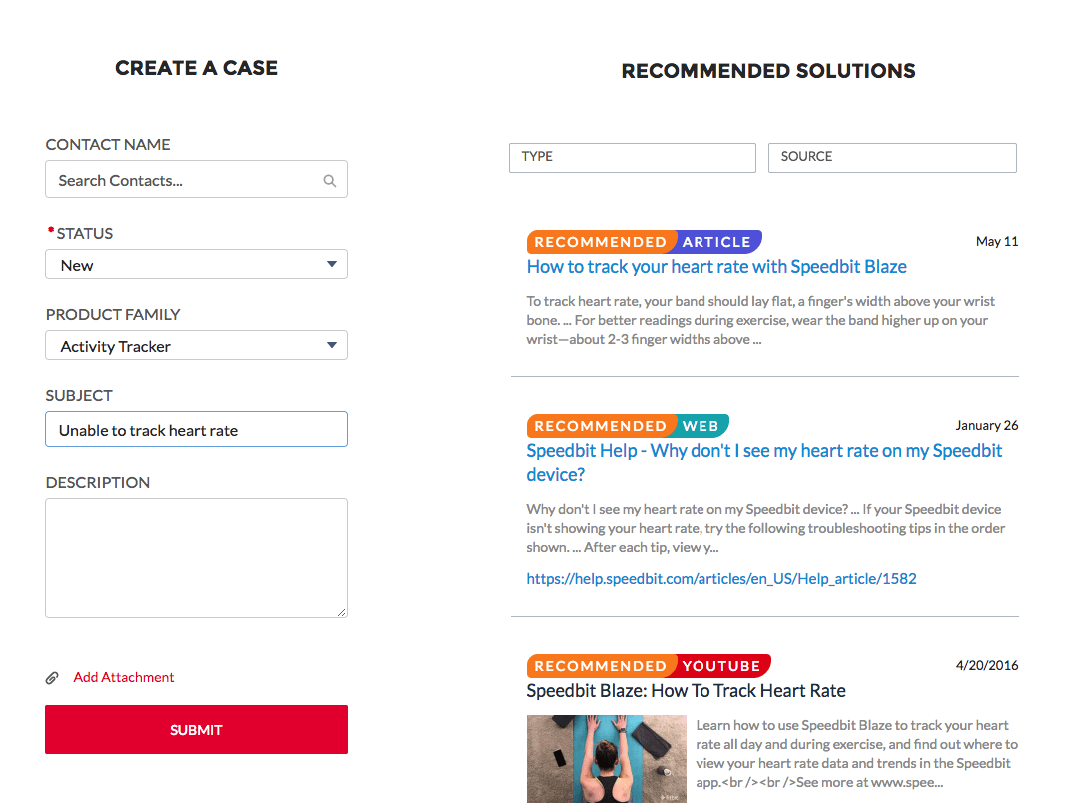
Landing on the Contact Us or Create a Ticket page indicates a strong intent to escalate an issue and create a case. An “explicit deflection” is defined as the abandoning the case creation and ticket pages — and resolving the issues on their own.
One of the ways companies can control for this is by providing personalized and relevant content recommendations on the case creation page or the digital channels like your website, based on the customer‘s intent and context.
Implicit Deflection
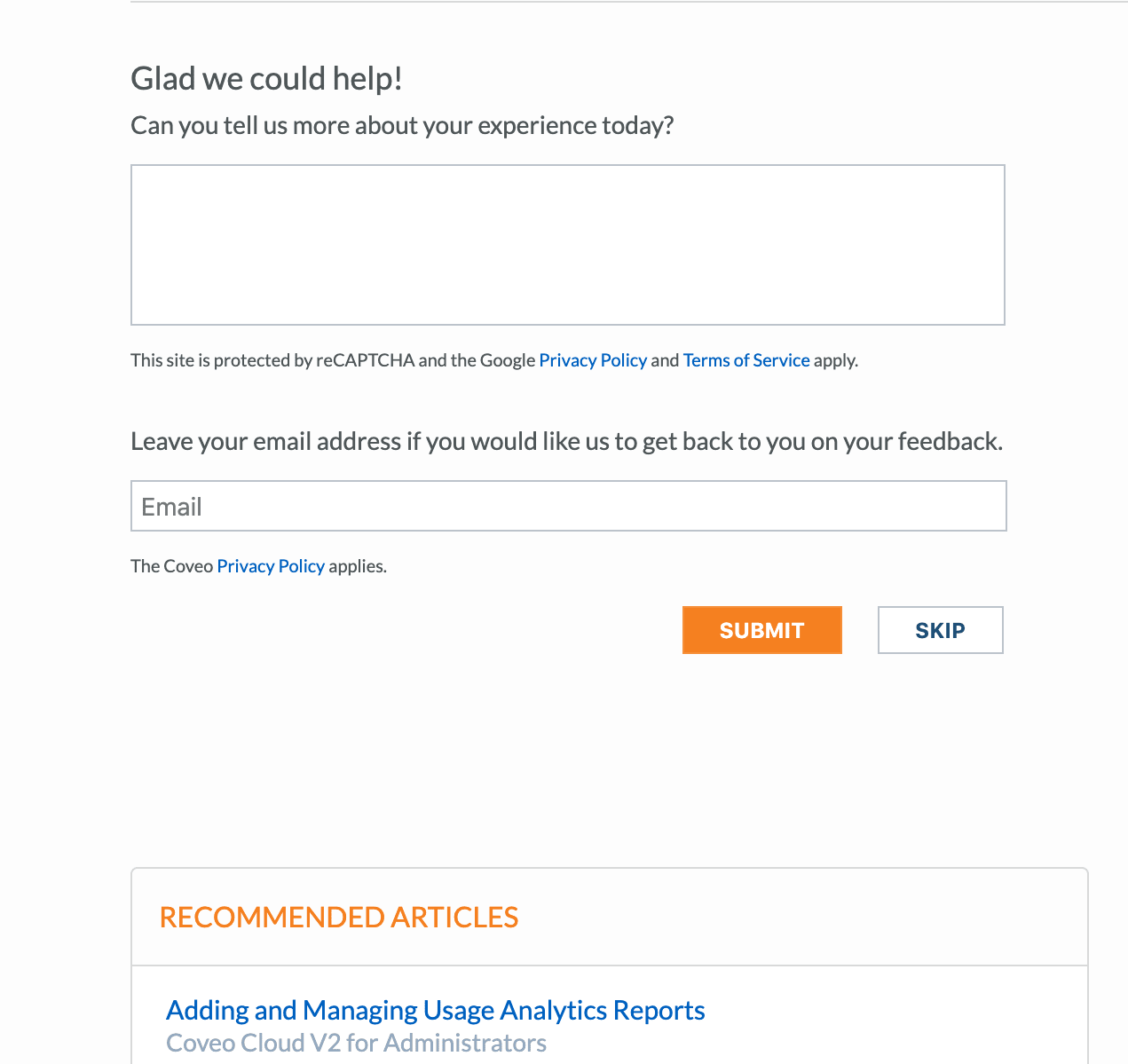
What if you deflect the case before the user even gets to the case creation page? This is where the “implicit deflection” metric comes in, where a user‘s behavior implies that the case was deflected. Here are some examples of implicit deflection that would qualify:
- Pageviews of self-service content that are strongly correlated with explicit case deflection. If it would count if the clicked on the self- page from the case creation page, why should it not count here? Typically, some firms measure this with an equation to allow a portion of the case deflection credit to go to this type of .
- Document ratings or feedback. “Did this document help you?” This type of feedback is invaluable in inferring how well the document was able to actually avoid a case being created. A 5-star rating system can add further nuance to a weighting system for the case deflection credit for your online community.
Enhancing Case Deflection and Self Service With KCS
You can encourage implicit deflection by implementing Knowledge-Centered Support (KCS)*.
KCS makes your deflection strategy (and by extension, self service) more impactful, which in turn improves implicit case deflection. Providing content associated with the most common customer issues increases your implicit deflection rates more than regular content. With KCS, you can make it easier for your customers to find the information they need.
Pro tip: Including KCS in your self-service strategy and giving due credit to those authors who push issues out of the call center and into self-service helps accelerate KCS adoption among your employees. Get more tips for growing a knowledge-sharing culture.
By empowering customers with information, they’re more likely to use and be satisfied with your product. This reduces your organization’s support costs, crafts a better customer experience, and in the long run, enhances sales.
Now that we’ve discussed all of this, what does case deflection look like in the wild wild west of the internet?
Self Service and Case Deflection Examples
So what does self service look like in the real world? Here are a few ideas for developing a deflection strategy that serves relevant answers to knowledge-hungry customers.
Question Answering
You know how you ask a question on Google, and not only do you get a link to a relevant article, you see the part of the article where the exact answer is? That’s how Coveo’s Smart Snippets work.
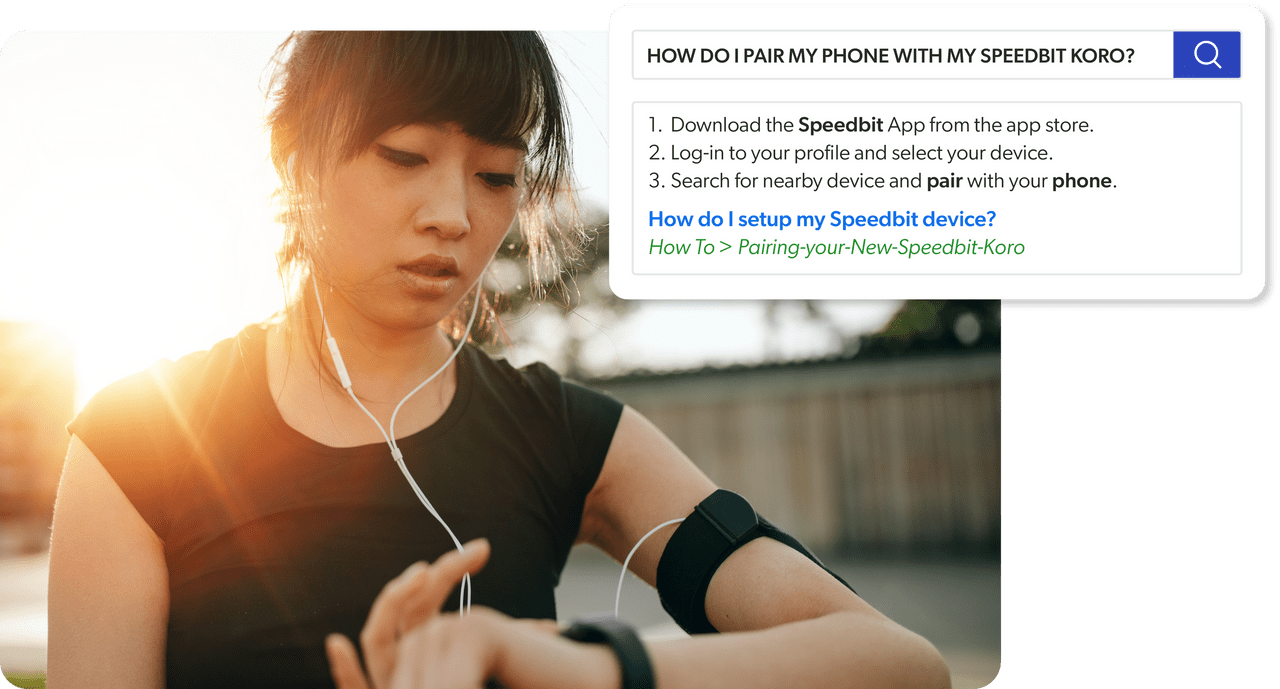
This feature helps the user with a snapshot of the answer to their query without them having to read the whole article. These snippets can be embedded into a search results page, or even served up through a chatbot. You can use this feature to measure self service success by checking:
- How many users say that the snippet was helpful?
- How many customers see a snippet and never submit a case?
AI-Powered Chatbot
An AI-powered chatbot interacts with customers at the earliest moment they have an issue. Since they’re speaking directly with a customer, they can help identify intent, which is a major assist.
A chatbot can help you estimate self service success by tracking:
- How many users interact with the chatbot and leave without submitting a case.
- How many questions the chatbot answered.
- How many users reply “yes” when the bot asks if their question was answered.
Case Classification
All support cases are not the same. How do you make sure every customer not only has the right amount of information, but also the right kind of information? By classifying their issues.
Classifying issues is a fast way to ensure that a support ticket is routed to the agent best suited to resolve the problem. This way, customers get exactlywhat they need. This can also be referred to as skill-based routing.
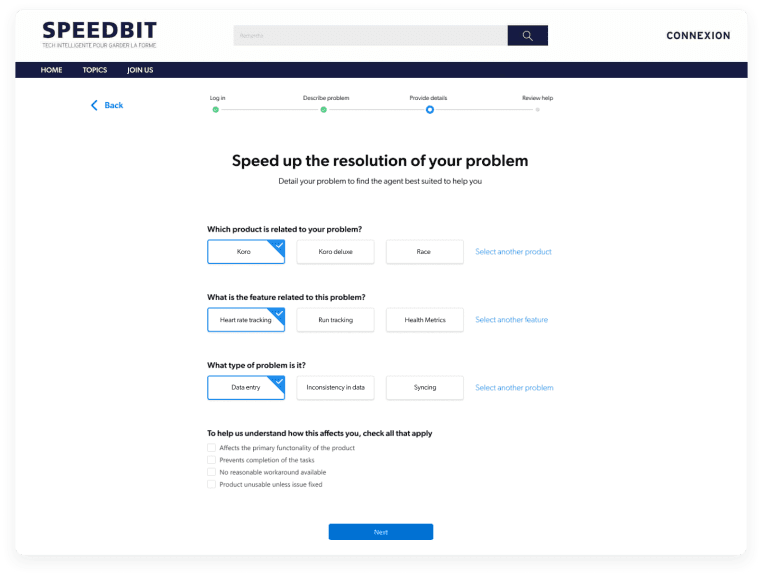
You can simplify this process with artificial intelligence like our Case Assist tool. This is an API-based solution that suggests relevant documents to customers while they are creating a case.
How do you measure case deflection with Case Assist? By assessing how many users start filling a form but end up not submitting the case. If they click on a content suggestion and quit trying to create a case, then the case is deflected. This is best used to measure your explicit deflection rate.
Evaluate the Search Experience With Analytics
Remember how I mentioned before that simply putting content out there won’t necessarily solve customer issues? Content findability is a large measurement of its success.
A thoughtful search experience also helps you elicit customers for feedback on your product or service. This allows you to build strong relationships with your customer base, and deepen customer loyalty.
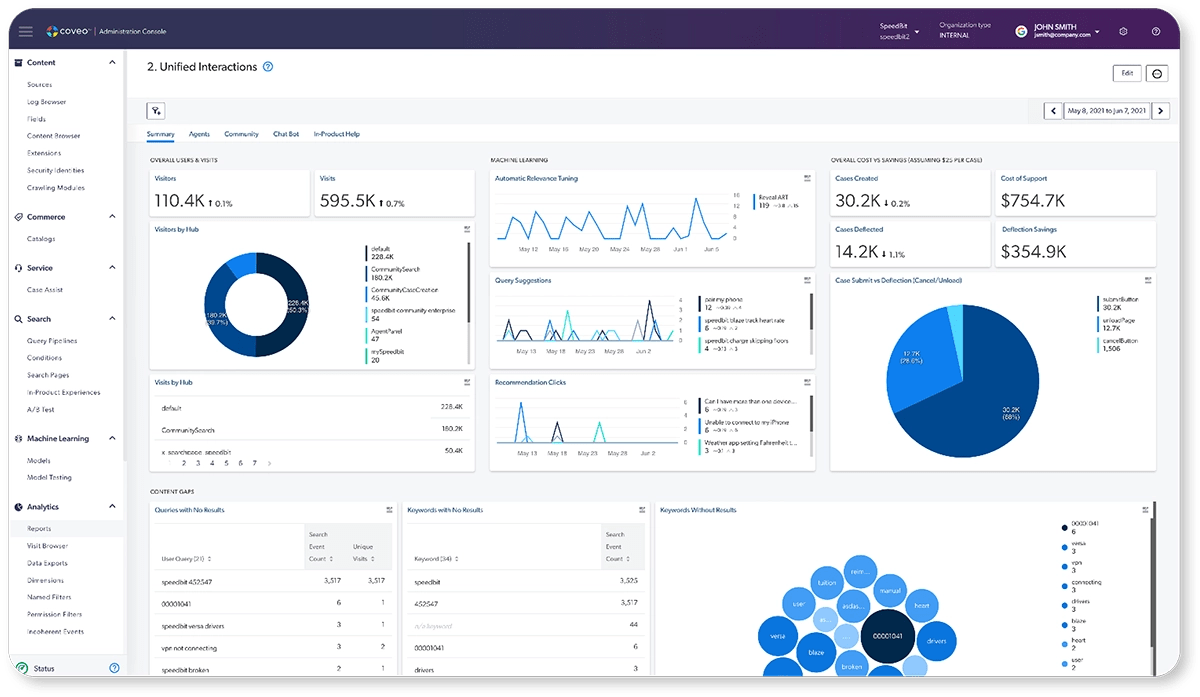
Search analytics reveal insights regarding what users have or haven’t found helpful. As well as glaring content gaps that your support team can fill by creating new content.
You can calculate how many users conduct a search on your support site or community. And then contrast this with the number of users submitting cases. This method is best for measuring implicit deflection.
Customer Feedback
And lastly, you could always talk to your customers. While not the most accurate method, it’s one of the most popular.
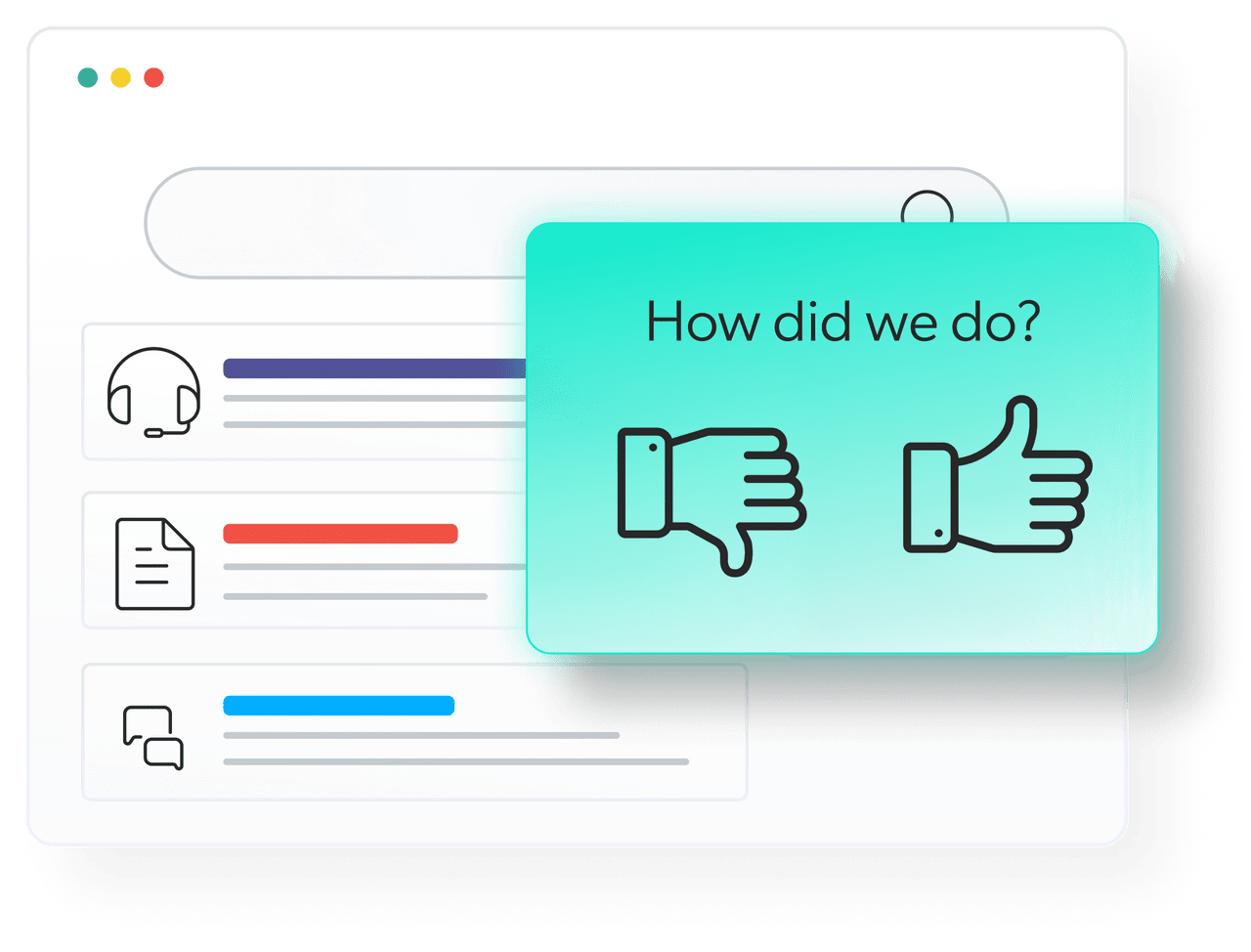
You can identify self service success and case deflection by including post-session surveys or automated questions asking the customers if they solved their problems using self-help.
You can utilize this to assess the rate of implicit vs explicit deflection.
How Case Deflection and Self Service Work Together
Every prefers the fastest and most effortless path to getting answers. And for the majority of customers, that’s self-. It’s not measuring case deflection vs. self- success — these two work together to show a snapshot of your digital experience.
Great is easy, relevant, and smart. The right case deflection strategy is one that enables continuous improvement. When customers are offered proactive insights and are recommended help at precisely the right moment via the right tool, more cases are deflected. And with a analytics solution to track these events, organizations can accurately measure self- success and case deflection rates.
Dig Deeper
The key to remembering the difference between self service and case deflection is that one turns your customers away, while the other builds a relationship. Are you doubling down on the former? Learn why you shouldn’t.

